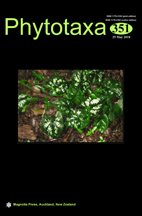Abstract
The type material of the Vietnamese wild banana Musa splendida (Musaceae), long thought to have been lost, was recently discovered in the Paris herbarium and here designated as a lectotype. Given its poor quality, an epitype is designated for adequate application of this name. An emended description of M. splendida is provided, with information on several morphological characters not indicated in the protologue, including its oblong-elliptic to oblong-lanceolate leaves 152–220 × 45–69 cm, erect inflorescences, ovoid-lanceolate female buds 24–28.5 × 13.7–14 cm, ovoid to ovoid-lanceolate male buds 9–22.5 × 8–13.5 cm, and bell- or mushroom-shaped seeds 5.5–7 × 6.5–9 mm. A color plate, along with information on habitat and ecology, distribution, and uses of this species, are also given.

